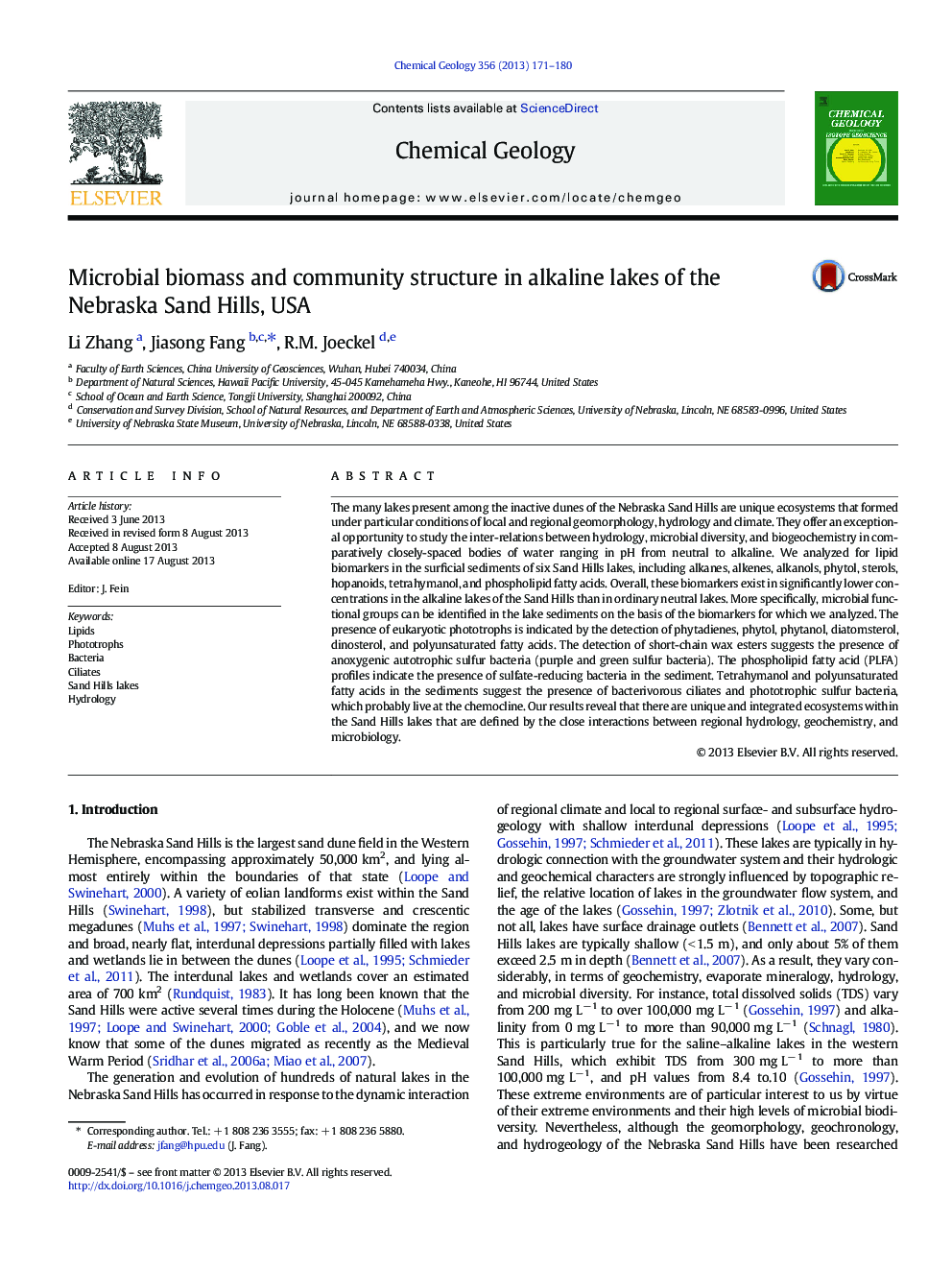| کد مقاله | کد نشریه | سال انتشار | مقاله انگلیسی | نسخه تمام متن |
|---|---|---|---|---|
| 4698903 | 1637613 | 2013 | 10 صفحه PDF | دانلود رایگان |
• Lipid biomarkers were identified in the alkaline lakes of the Nebraska Sand Hills.
• Alkanes, alkanols, sterols, hopanoids, tetrahymanol, and phospholipid fatty acids
• Biomass and functional groups of microorganisms were determined.
• Unique and integrated ecosystems within the Sand Hills lakes
• Implications in the hindcasting of extreme environments on the Archaean Earth
The many lakes present among the inactive dunes of the Nebraska Sand Hills are unique ecosystems that formed under particular conditions of local and regional geomorphology, hydrology and climate. They offer an exceptional opportunity to study the inter-relations between hydrology, microbial diversity, and biogeochemistry in comparatively closely-spaced bodies of water ranging in pH from neutral to alkaline. We analyzed for lipid biomarkers in the surficial sediments of six Sand Hills lakes, including alkanes, alkenes, alkanols, phytol, sterols, hopanoids, tetrahymanol, and phospholipid fatty acids. Overall, these biomarkers exist in significantly lower concentrations in the alkaline lakes of the Sand Hills than in ordinary neutral lakes. More specifically, microbial functional groups can be identified in the lake sediments on the basis of the biomarkers for which we analyzed. The presence of eukaryotic phototrophs is indicated by the detection of phytadienes, phytol, phytanol, diatomsterol, dinosterol, and polyunsaturated fatty acids. The detection of short-chain wax esters suggests the presence of anoxygenic autotrophic sulfur bacteria (purple and green sulfur bacteria). The phospholipid fatty acid (PLFA) profiles indicate the presence of sulfate-reducing bacteria in the sediment. Tetrahymanol and polyunsaturated fatty acids in the sediments suggest the presence of bacterivorous ciliates and phototrophic sulfur bacteria, which probably live at the chemocline. Our results reveal that there are unique and integrated ecosystems within the Sand Hills lakes that are defined by the close interactions between regional hydrology, geochemistry, and microbiology.
Figure optionsDownload as PowerPoint slide
Journal: Chemical Geology - Volume 356, 9 October 2013, Pages 171–180
